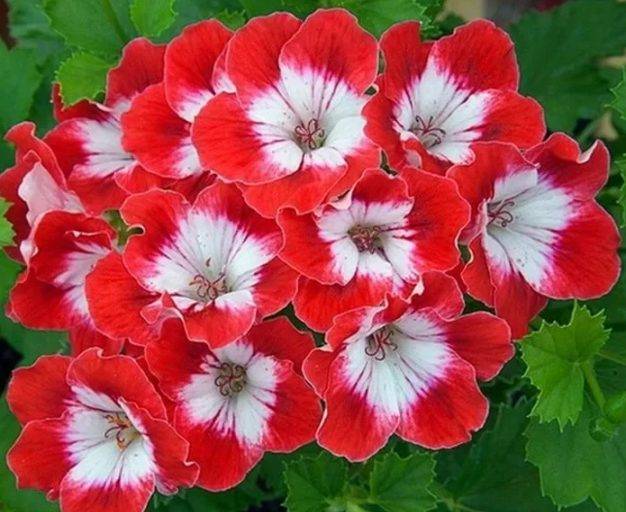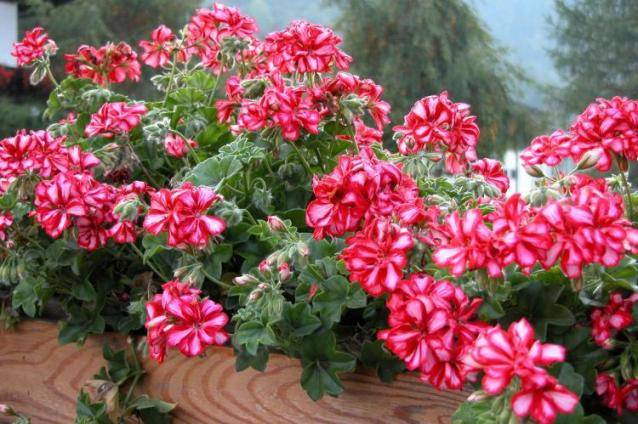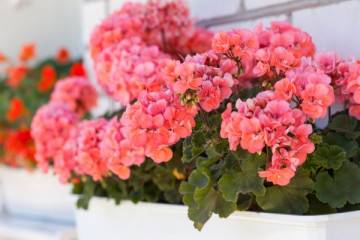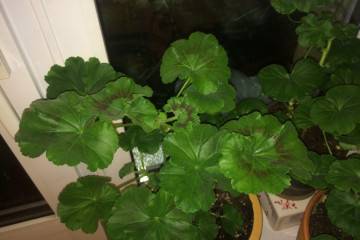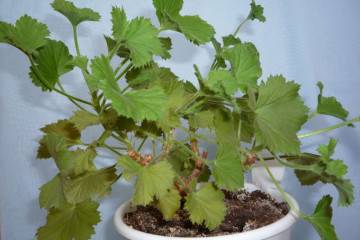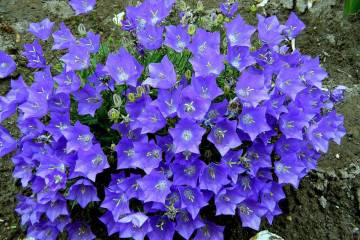Blood-red garden geranium
Content:
These varieties of geraniums stand out for their beautiful flowering, which is observed both at home and in the open field. The blood-red geranium flower did not get this name because of the red petals. In autumn and winter, the dense foliage and basal stems turn red.
Blood-red garden geranium (Geranium sanguineum) - what is this flower
The plant belongs to the Geranium family, the genus Geraniums. The life span of the bush is 12-15 years. In the wild, it grows in many European states, Russia, in the Caucasus.
Short description
Regardless of the variety of red geranium, botanical properties are almost the same.
Description:
- spherical bushes grow up to 50–80 cm;
- there is a long nodular rhizome;
- stem 25–60 cm long, branched, covered with white villi;
- green leaves are divided into lobes;
- tasteless brown fruit with seeds, resembling a crane's beak;
- flowers of various shades (mainly pink) consist of 5 petals with a diameter of 4 cm.
Flowering begins in June-July, fruits appear in August-September.
Plant varieties and popular winter-hardy varieties
Many varieties tolerate winter frosts well. Among them, the most popular are the following specimens:
- Canon Mills. The height of the plant is only 15 cm. The petals are double pink with a purple tint and dark veins;
- Max Fry. The bushes reach a height of 20 cm. The beautiful pink petals have dark pink veins. The plant is unpretentious, adapts to any weather conditions;
- Horizon. Beautiful geranium of long flowering. The flowers are bicolor with white eyes. Used in landscape design. Since the bushes are compact, the plants are hung in pots;
- Striatum. This red geranium reaches a height of 10-15 cm. The flowers are small, light pink in color with dark veins and a central eye. Found on sale under the name Lancastrense;
- Alan Blum is a luxurious and common variety. The flowers are light pink with dark veins. The plant is unpretentious. Grown in many climatic zones;
- Album (Album). The variety is translated from Latin as "white". This is understandable, because the flower has white petals. The height of the bush is 30 cm. Abundant flowering;
- Maverick. The bush is about 20-30 cm high. The inflorescences are large, giving beautiful hemispherical flowers of different shades. The variety is indifferent to temperature extremes.
Planting blood-red geraniums outdoors
Despite the unpretentiousness of the garden geranium, the fate of the plant depends on the observance of some unshakable rules.
Seat selection
Bushes prefer well-lit, sunny areas. They do not refuse to grow in partial shade, but in the first half of the day they need lighting. In addition, the absence of drafts and strong winds favorably affects growth and flowering.
How to prepare the soil and flower for planting
A more suitable soil is loamy and loose with an acidity of pH 7.5–8.5. Before planting, along with digging, peat, moss, humus, sand and wood ash are introduced. Poor soils are enriched with complex mineral fertilizers 3-4 weeks before planting.
How to care for pelargonium in summer
Gardeners find caring for geraniums easy. In the summer, she needs watering, feeding and pruning.
Watering rules and humidity
Water in moderation but regularly in the morning or evening. Do not overfill the plant, this will lead to brown rot. Drought also leads to undesirable consequences. The best time to water is when the soil is completely dry.
Top dressing and soil quality
Geranium does not require abundant feeding, because the necessary fertilizers were introduced during planting. But there are no contraindications against additional small amounts of fertilizers.
After the snow melts, fertilizing with nitrogen fertilizers, ammonium nitrate or urea is carried out. With the active growth of the aboveground part of the bush, phosphorus-potassium and nitrogen fertilizers, urea and superphosphate are applied.
Before flowering, they are fed with phosphorus. When inflorescences appear, potassium is added every 2 weeks, and with active flowering, the culture needs phosphorus and potassium.
Pruning and replanting
Pruning takes place in August. Old bare stems are removed, slowing down the flowering rate. In addition, the presence of dried leaves and flowers is fraught with the appearance of gray rot.
Pelargonium is transplanted either in the spring or in the fall. Geraniums are transplanted 2-3 years after planting, and even this in the case of a strong growth of the rhizome. Deep planting holes are dug at a distance of 20–30 cm from each other. When transferring a bush to a new hole, the roots are evenly distributed over the bottom for a complete feeling of freedom.
Winter geranium care
Red Geranium cultivars do not need shelter for the winter. But in harsh weather conditions, covering material is used or flowers are previously transferred to the room. In an apartment, the plant sometimes gets sick due to temperature changes.
Flowering features
In winter, blood-red geranium enters a resting phase: it rests from flowering, growth slows down, due to which the consumption of essential substances decreases. The flower is gaining strength for a new active period.
A period of activity and rest
Already starting in October, watering is reduced, feeding is reduced or completely stopped. The main task of gardeners during this period is to trim most of the green mass. The period lasts about 9 weeks.
In the spring, the active growth of the flower begins. Initially, basal leaves appear, the stem grows, and then a loose inflorescence appears. This is the period from May to early September. Petals change until fruits appear, which dry out, burst and scatter seeds.
Types and shape of flowers
Flowers differ in the number of petals: simple 5 petals, semi-double - 6-8, double - more than 8. The shape of the flowers is in the form of a rose, tulip, star. The colors are very diverse, with or without patterns.
Flower reproduction methods
In the open field, reproduction is possible in the following ways:
- seeds;
- dividing the roots;
- cuttings;
- seedlings;
- self-seeding.
Having reached maturity, the fruits burst and scatter seeds, from which geranium bushes grow later.This method of reproduction is called self-seeding.
Reproduction by dividing the rhizome
For blood red geraniums, this method is simple and painless. The overgrown rhizome is dug up and divided into parts by at least one bud. The procedure is carried out in early autumn or spring.
Seed reproduction
The seeds are planted in March-April. Sprouts appear at the end of May. Geraniums will bloom next year. The method is rarely used and mainly for selection.
Growing problems, diseases and pests
Blood red geraniums rarely get sick, but if the rules of cultivation are violated, problems arise. The most common are leaves turning yellow and dropping. The reason is excessive or limited watering, lack of fertilizing. To get rid of the problem, remove the affected parts of the bush, adjust watering and feeding.
Drying of the tips of the leaves signals insufficient soil moisture. If at the same time the leaves fall off, the bush is transferred to a new site.
Red geranium suffers from the attack of spider mites, aphids, whiteflies. To combat them, use chamomile infusion, which is sprayed on the plant, and after 3 hours they are washed off with warm water. If the herbs do not help, they switch to insecticides.
Planting and caring for blood red geraniums outdoors does not require time and effort. The main thing is to choose the right place, water and feed in a timely manner, cut off the green mass. In this case, geranium will deliver aesthetic pleasure to its owner for a long time.
